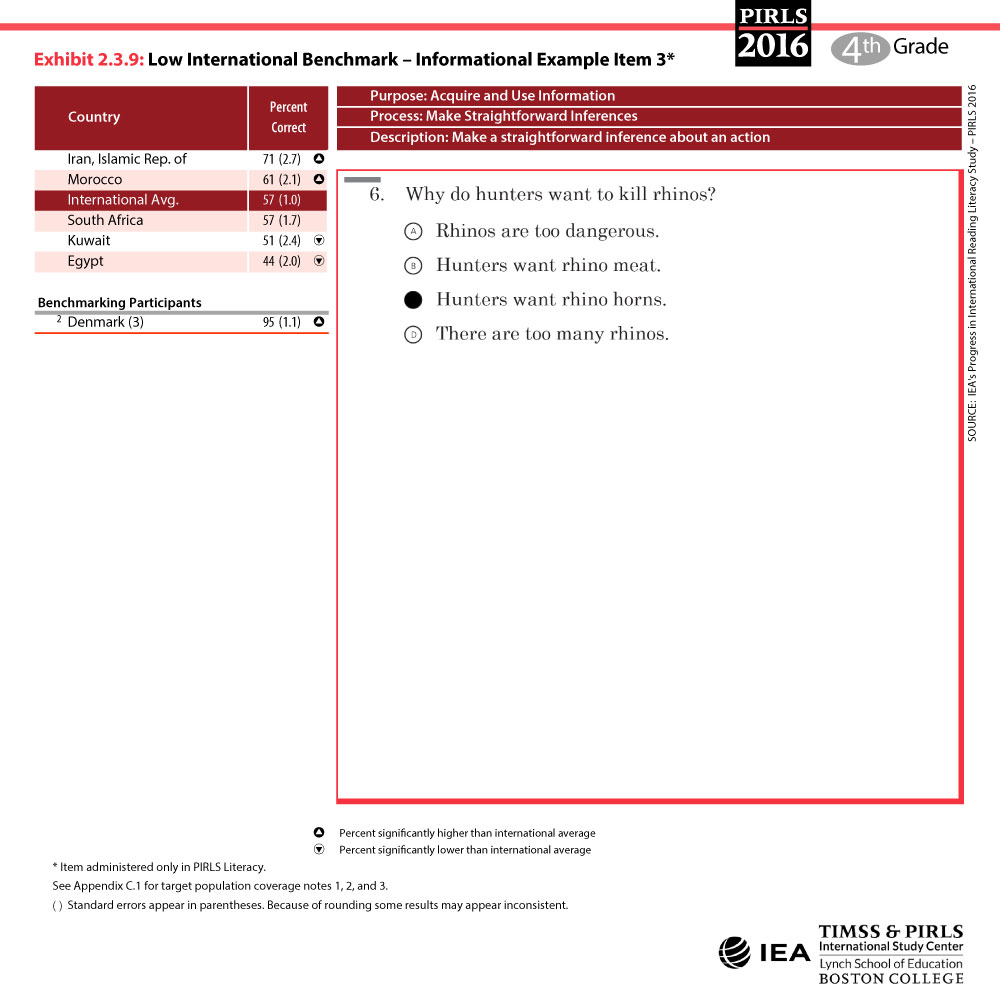PIRLS 2016 Low International Benchmark (400) of Reading Achievement
Exhibits 2.3.1 through 2.3.9 contain nine examples of the types of items that anchored at the Low International Benchmark. There are six example items based on literary text, four from “The Pearl,” which was only included in the PIRLS Literacy assessment, and two from “Flowers on the Roof,” which was included in both the PIRLS and PIRLS Literacy assessments. There also are three example items based on the “Rhinos” informational text (see Appendix H).
Each exhibit shows achievement results for the countries that participated in PIRLS Literacy and the two items from “Flowers on the Roof” also contain the results for all the countries that participated in PIRLS. The country-by-country results are accompanied with up and down arrows indicating a significantly higher or lower percentage of success than the international average. The reading purpose, comprehension process, and scale anchoring description are provided above the item. For multiple-choice items, the correct response is indicated. Constructed response questions were worth 1, 2, or 3 points. Each constructed response item is shown with an illustrative student response and the amount of credit awarded the response is shown across the bottom of the exhibit, usually full credit.
Example Item 2.3.1 (constructed response) illustrates that students at the Low International Benchmark could retrieve an explicitly stated detail from “The Pearl” and Example Item 2.3.2 that they were able to make an inference about a detail from the beginning of the story. Example Items 2.3.3 and 2.3.4 show students reaching this level also were beginning to interpret and integrate information presented across the text. In the latter case, they were asked about the “whole story” and responded with partial evidence (54% on average internationally). In Example Item 2.3.5 and Example Item 2.3.6 based on “Flowers on the Roof,” students retrieved an explicitly stated detail and made an inference based on information at the end of the story.
As shown in two example items based on “Rhinos,” Example Item 2.3.7 asking about a chart and Example Item 2.3.8 about a later section of the text, students could retrieve detailed information from different formats and sections of the text. Example Item 2.3.9 asked students to make an inference about why hunters want to kill rhinos.
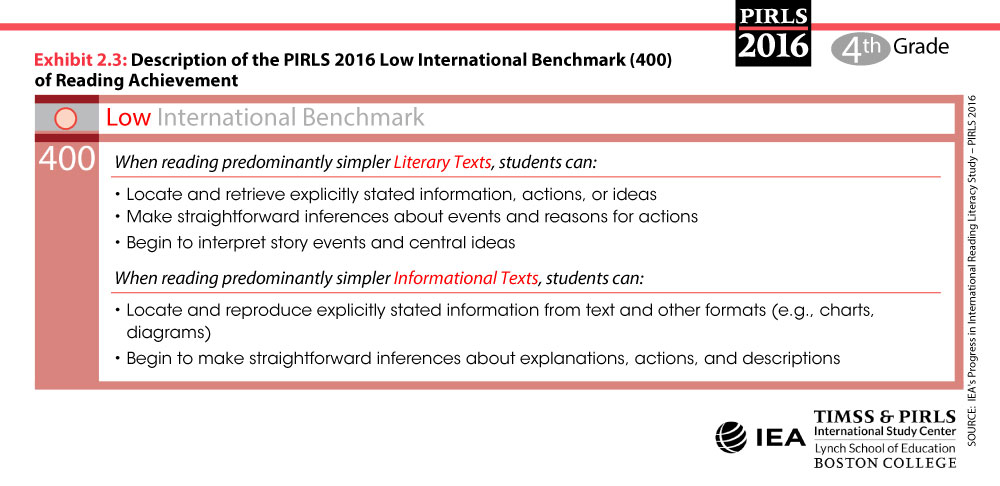
Item 1
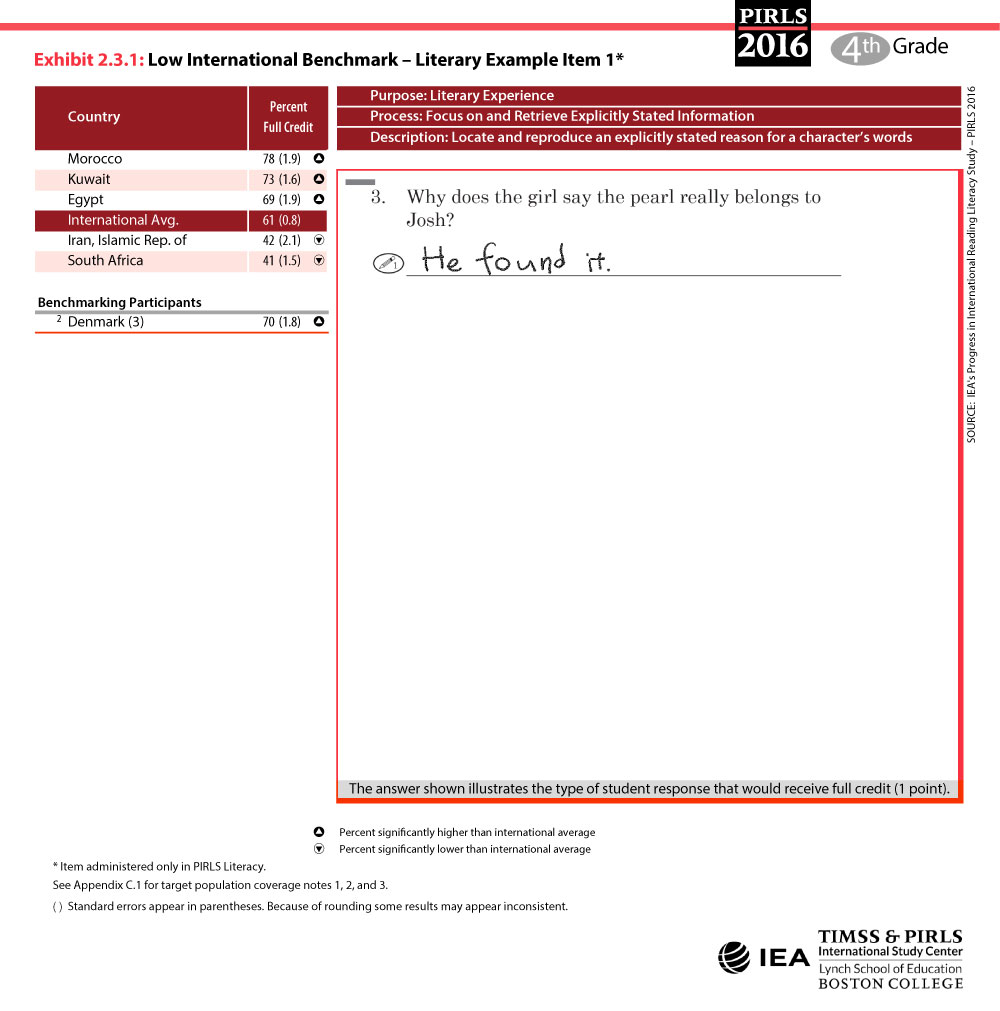
Item 2
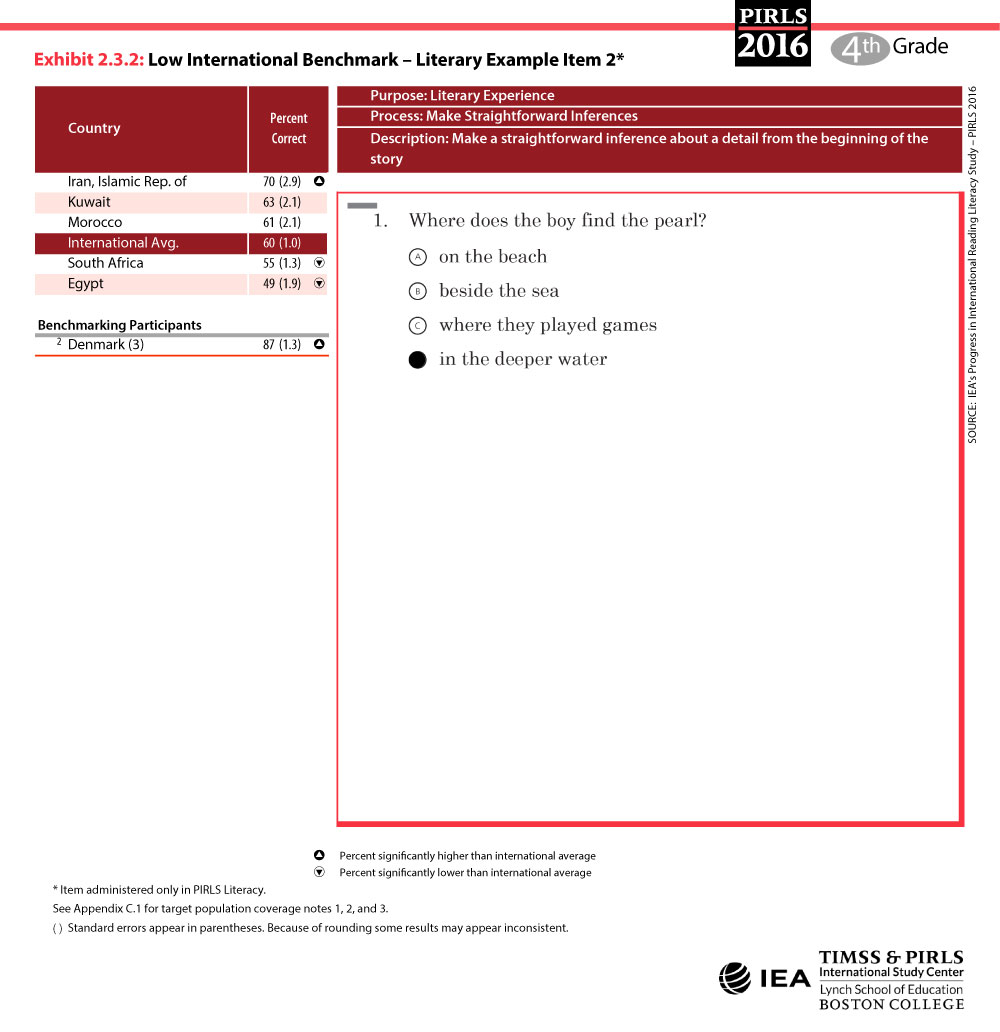
Item 3
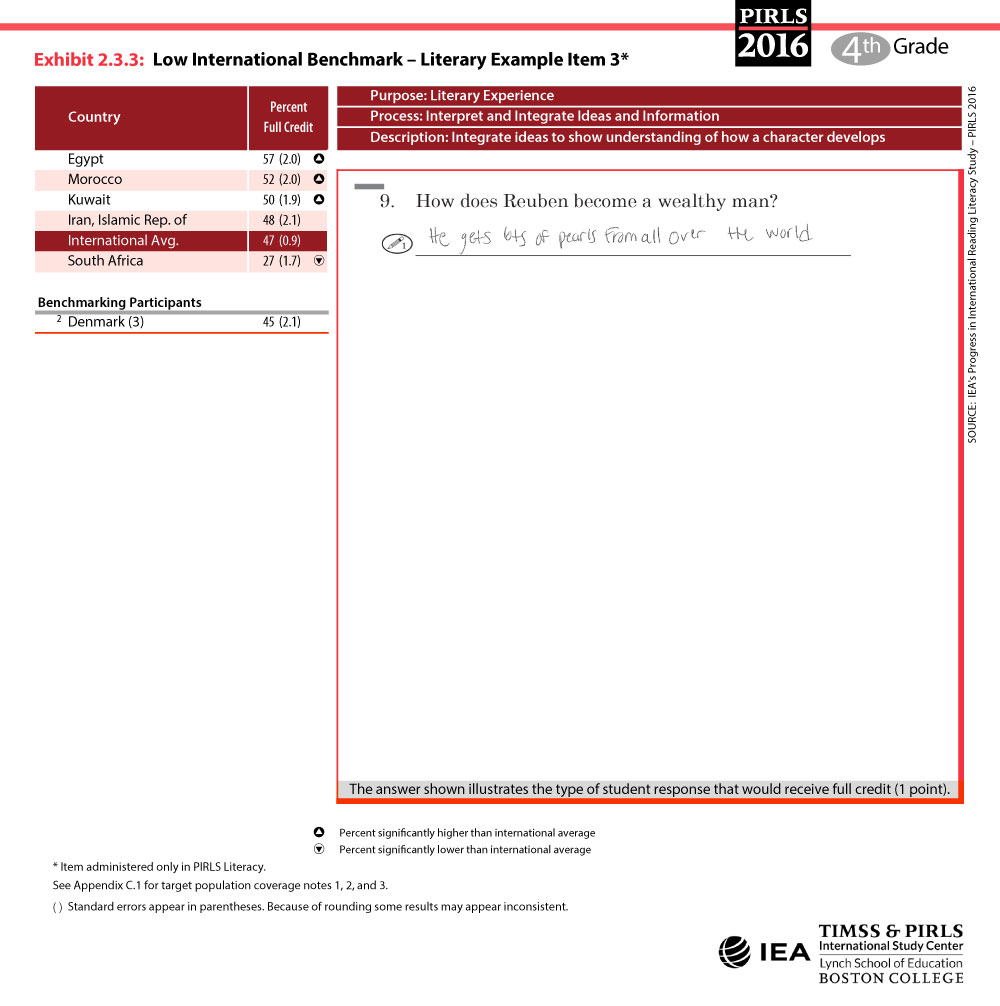
Item 4
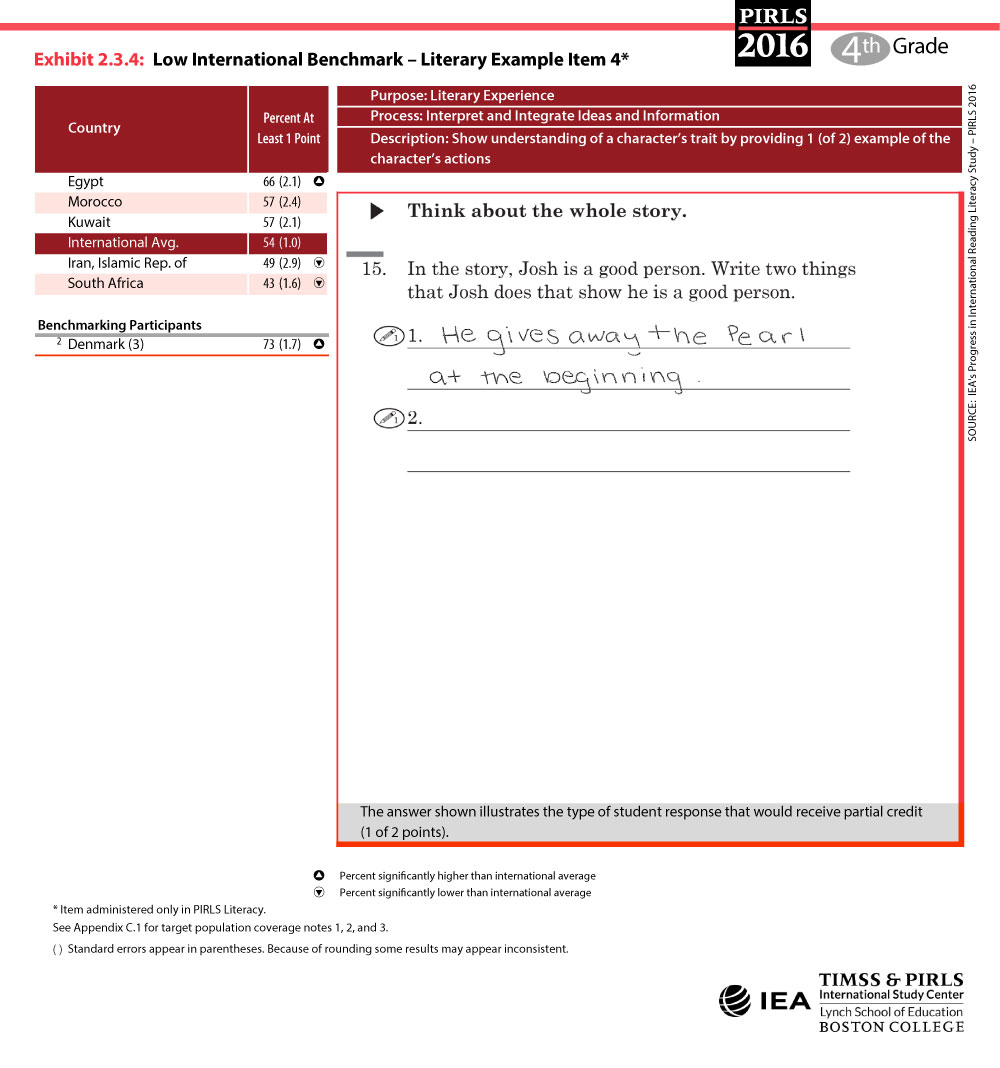
Item 5
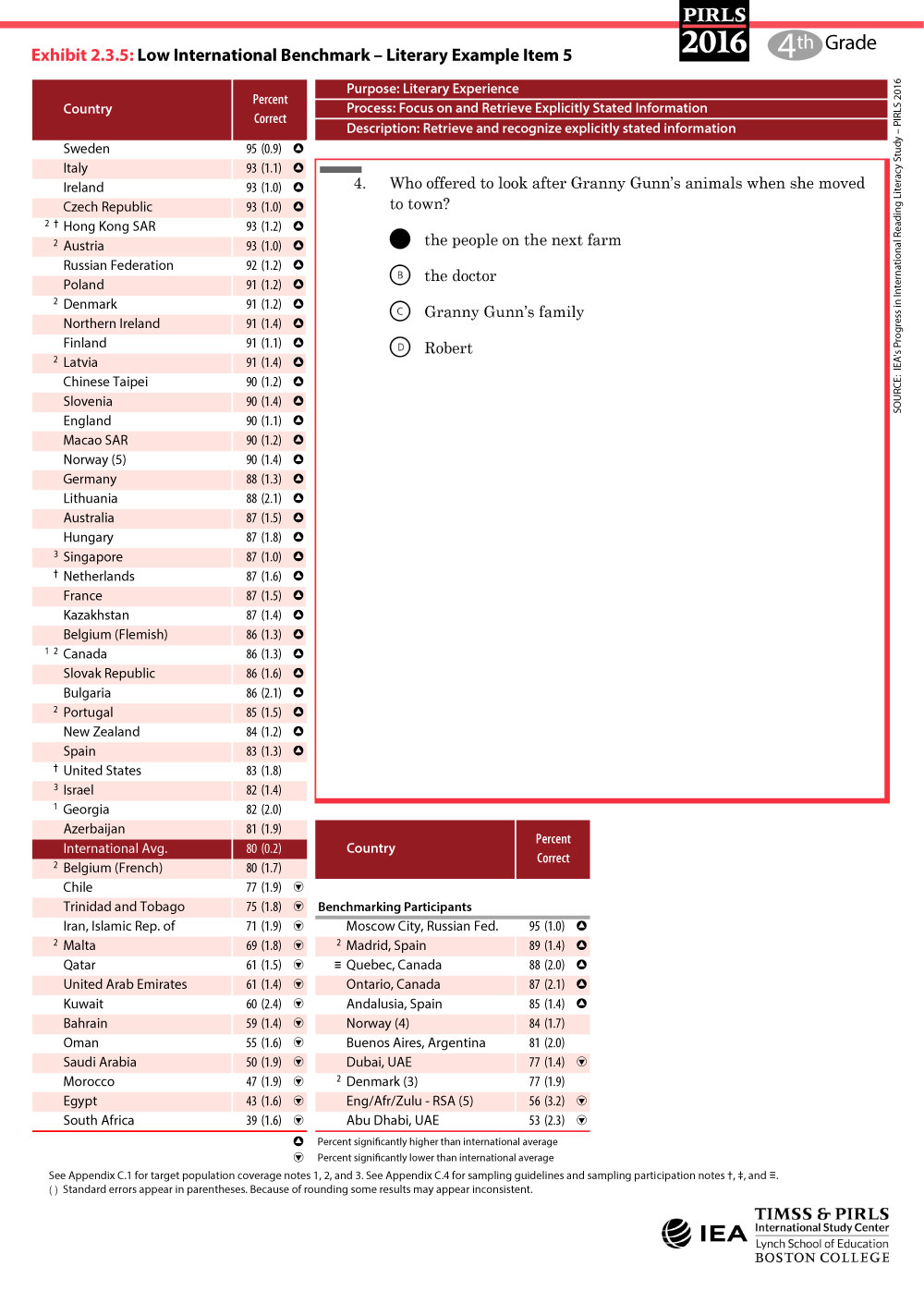
Item 6

Item 1
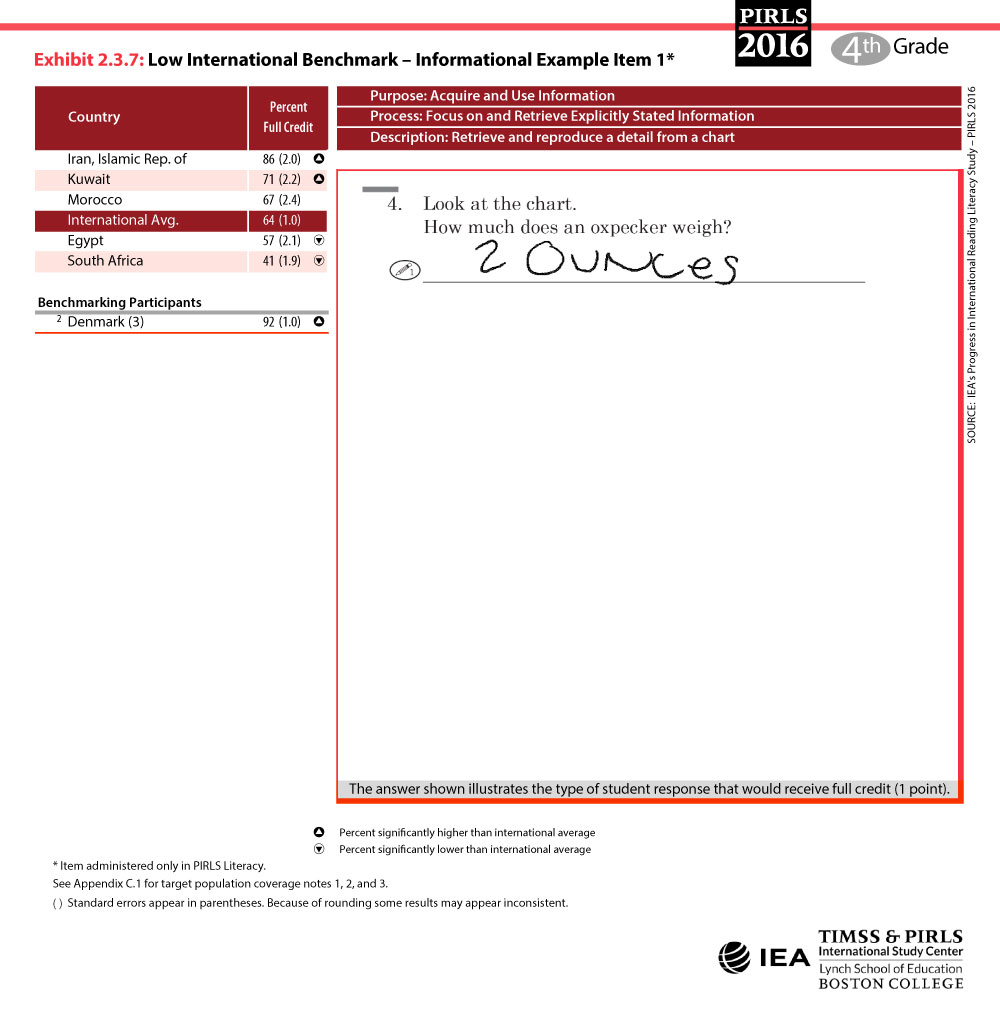
Item 2
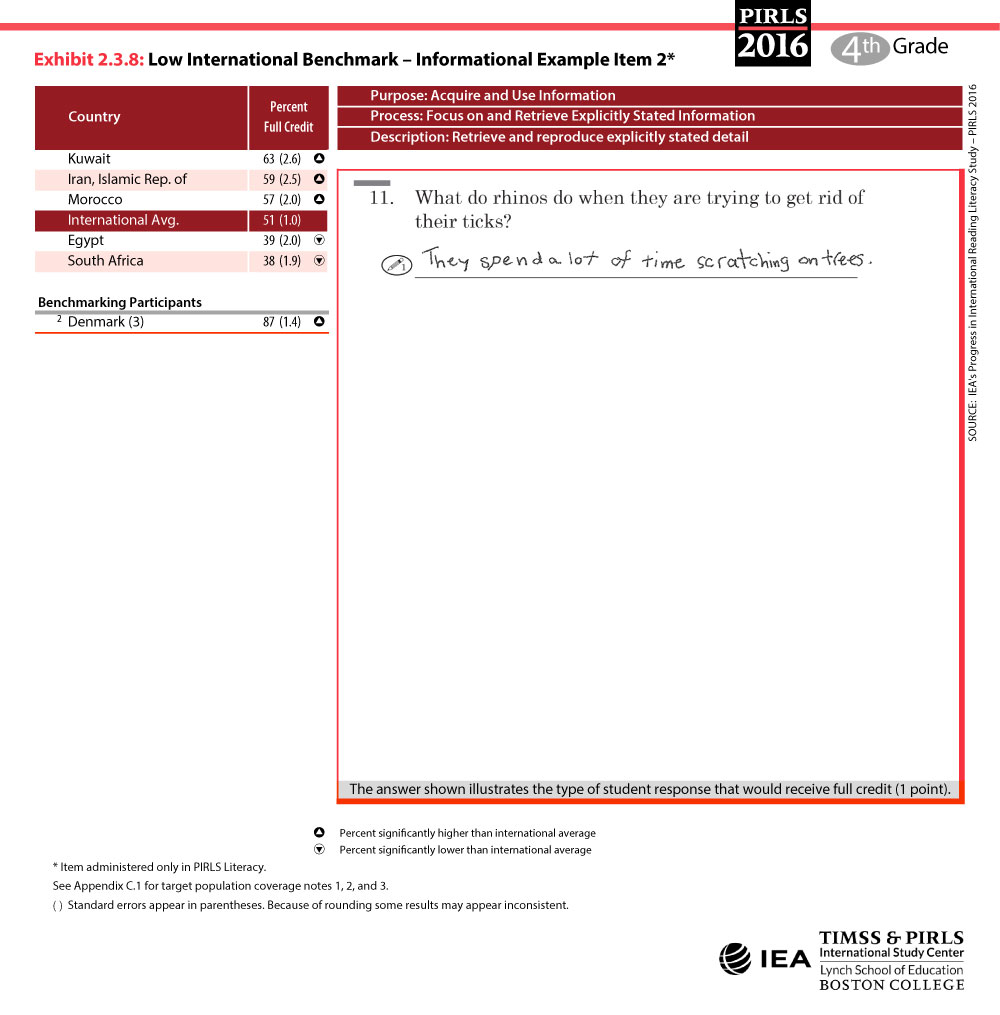
Item 3
